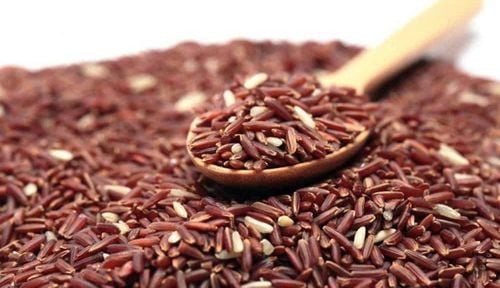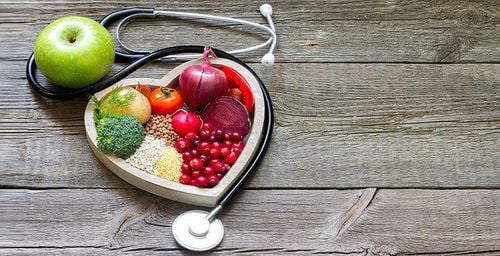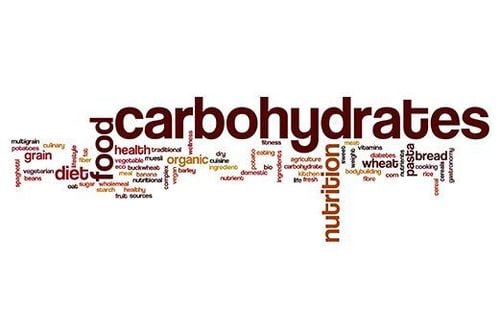This is an automatically translated article.
There are many people wondering: “Is it good to eat bread?” and “Which type of bread is healthy?”. In fact, it is true that some breads are healthier than others, for example whole-grain breads will provide more fiber, vitamins and minerals than those made from grains. refined. Here are 7 suggestions for the healthiest breads you can choose.
1. Sprouted grain bread
Sprout grain breads are made from whole grains that are starting to sprout after being exposed to heat and moisture. Germination has been shown to increase the amount and content of nutrients in the grain (such as antioxidants, fiber, protein).
A study found that Pita bread made with 50% sprouted wheat flour had 3 times more folate - an important vitamin that helps convert food into energy - 3 times higher than normal Pita bread.
In addition, sprouted cereals do not raise blood sugar as much as other grains, so this is considered a good choice for people with diabetes or reduced blood sugar control. Estimated one slice (34 grams) of Ezekiel sprouted wholemeal bread provides: 80 Calories, 4 grams protein, 0.5 grams fat, 15 grams carbs, 3 grams fiber.
MORE: Should you let grains and seeds sprout?
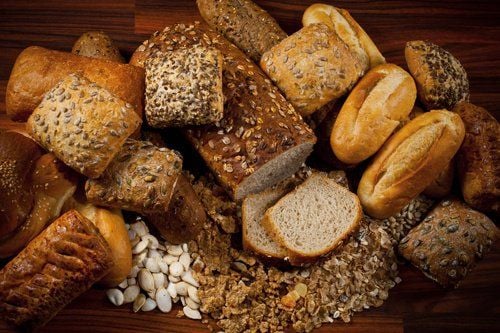
Bánh mì ngũ cốc nảy mầm được làm từ những ngũ cốc nguyên hạt đang bắt đầu nảy mầm
2. Natural yeast bread
Natural yeast bread (Sourdough) is made from naturally fermented grains. Fermentation reduces the amount of phytate (phytic acid) bound to certain minerals and reduces their absorption.
One study showed that natural fermentation reduces phytate content by more than 50% compared to using conventional yeast. Sourdough bread is also easier to digest than other breads possibly due to the availability of Prebiotics and Probiotics formed during fermentation.
Probiotics are healthy bacteria found in the human body and available in a number of foods. Prebiotics are indigestible fibers that help feed these bacteria. Getting enough of each promotes gut health and promotes good digestion.
Finally, natural yeast bread is also said to have a low glycemic index (GI), a measure of a food's impact on blood sugar. This is because the bacteria in the fermented dough slow down the digestion of starch, making this bread less likely to cause a sudden spike in blood sugar.
Natural yeast bread can be made with either whole wheat flour or white flour. While each ingredient enjoys the benefits of fermentation, natural yeast dough made from whole wheat flour is considered to be higher in fiber, iron, and nutrients. Estimated one slice (47 grams) of whole wheat bread provides: 120 calories, 4 grams protein, 20 grams carbs, 3 grams fiber.
3. 100% Whole Grain Bread
Whole grain breads are made from whole grains that keep the whole grain intact, including the germ, endosperm, and bran. In which:
Bran is the hard outer shell, containing a lot of fiber. The bran and germ contain proteins, fats, vitamins, minerals and beneficial plant compounds. The endosperm is mostly starch. That's why whole grains have more fiber and are considered more nutritious than refined grains, which have been processed to remove the bran and germ.
Whole grains have many health benefits, including a reduced risk of type 2 diabetes, cardiovascular disease and some cancers.
However, many manufacturers now label bread as “whole wheat” to attract customers, even if the main ingredient is refined flour. Therefore, you should look for bread with 100% flour or whole grains and pay attention to the content of other ingredients such as added sugar and vegetable oils. Estimated one slice (46 grams) of whole grain bread contains: 110 calories, 4 grams protein, 0.5 grams fat, 23 grams arb, 4 grams fiber.
MORE: 10 tips when choosing whole grain foods
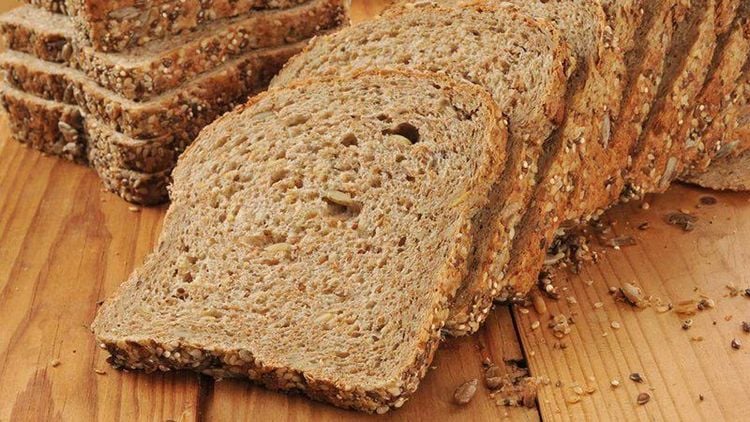
Bánh mì ngũ cốc nguyên hạt được làm từ ngũ cốc giữ nguyên toàn bộ hạt, bao gồm mầm, nội nhũ và cám
4. Oatmeal Bread
Oatmeal bread is made from a combination of oats, whole wheat flour, yeast, water and salt. Since oats have a high nutritional value and offer certain health benefits, this will make a healthy bread for you. In particular, oats are high in fiber (beta glucan) and beneficial nutrients, including magnesium, vitamin B1 (Thiamine), iron and zinc. The beta glucan in oats can help lower cholesterol levels, regulate the glycemic index, and reduce high blood pressure.
However, just because bread says "oat" or "oatmeal" does not mean it's healthy. It can be a bread that contains only a very small amount of oats and is mostly refined flour, sugar and oil. So look for breads that have oats and whole wheat flour as the two key ingredients. Estimated one slice (48 grams) of whole-wheat oat bread contains: 130 calories, 6 grams protein, 1.5 grams fat, 23 grams carbs, 4 grams fiber.
5. Flaxseed bread
Flax bread, made primarily from whole grain flour and flax seeds, is one of the healthiest breads you can eat.
Flaxseed is a rich source of alpha-linolenic acid (ALA), an omega-3 fatty acid. Many studies show that getting more ALA in the diet reduces the risk of heart disease. What's more, flaxseeds also contain compounds called lignans that can act as antioxidants and help the body fight certain cancers (especially breast cancer). An estimated slice (34 grams) of Ezekiel whole grain flax bread contains: 80 calories, 5 grams protein, 1 gram fat, 14 grams carbs and 4 grams fiber.
6. 100% rye bread
Rye is similar to wheat but is darker in color and denser. Traditional rye bread is usually made from only 100% rye flour and does not contain any flour, while most rye breads today are made from a combination of the two.
When compared to wheat, rye is generally considered nutritious, filling for longer and having less of an effect on blood sugar.
In rye has a high amount of soluble fiber that helps the body reduce insulin release, slows the digestion of carbs and lowers blood sugar.
The healthiest rye bread is the one made with 100% whole-grain sprouted rye flour. Since sprouting increases the fiber content of the grain, sprouted rye has more fiber and is healthier than the non-germinated variety. Estimated one slice (28 grams) of sprouted rye bread provides: 60 calories, 4 grams protein, 1 gram fat, 12 grams carbs, 3 grams fiber.
7. Gluten Free Bread
Gluten-free bread is a safe choice for people who need to avoid gluten, such as those with Celiac disease or gluten sensitivity.
While the exact ingredients in gluten-free bread depend on the grain used, they are usually made from a mixture of gluten-free flours, such as brown rice, almonds, coconut , tapioca, potato or cornmeal.
This bread has a high fiber and protein content, so it helps you feel full for longer, but contains fewer calories and starch than other types of bread.
An estimated one slice (36 grams) of gluten-free bread can contain 90 calories, 3 grams of Protein, 5 grams of fat, 6 grams of carbs, 5 grams of fiber.
There are indeed some types of bread that are healthier than others, such as fermented bread, bread made with rye, flaxseed and oats. To choose a bread that's good for your body, look for varieties made with 100% whole grains or sprouted grains. Also make sure the bread you choose doesn't have any added sweeteners or vegetable oils. And whichever you choose, eat bread in moderation as part of a balanced diet, combined with a variety of other nutritious foods.
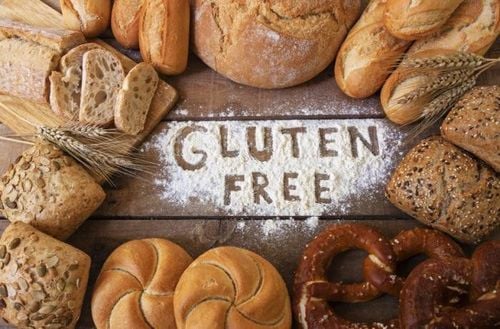
Bánh mì không chứa gluten có hàm lượng chất xơ và protein cao
Please dial HOTLINE for more information or register for an appointment HERE. Download MyVinmec app to make appointments faster and to manage your bookings easily.
Reference source: healthline.com






